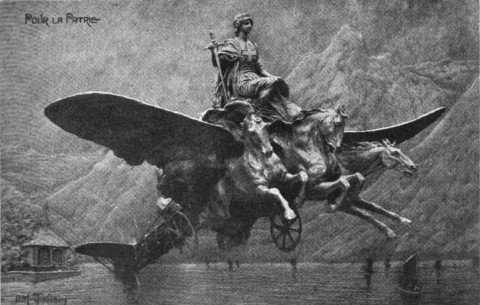Now that I'm back home, it's time to sum up what my UK sojourn achieved. The short answer, at least in terms of my immediate research objectives, is that it yielded only mediocre results.
The ostensible purpose for the trip was to attend the Empire in Peril workshop at Queen Mary and to give a paper on the 1913 phantom airship scare. This I did, and I think it went well enough (though perhaps in future I should revert to actually reading a paper, rather than speaking to slides). It certainly helped that I was after Michael Paris (Central Lancashire), who set the scene with a discussion of early aerial warfare fiction, and Michael Matin (Warren Wilson), who used the phantom airship scare as a starting point to reflect upon invasion scare literature more generally. This capped off a stimulating two days of papers and discussions about, inter alia, inter-service debates regarding the possibility of invasion (Matthew Seligmann, Brunel; Richard Dunley, KCL), the representation of compulsory service in invasion scare fiction (Harry Wood, Liverpool), the Yellow Peril (Robert Brown, Birmimgham; Ailise Bulfin, Trinity College Dublin); and women writers on Germany (Richard Scully, UNE). A usefully discordant note was struck by Ian Hopper (Brandeis) who questioned just how seriously publishers, authors and readers took invasion scare novels: were they reflective of deeply held fears or simply trivial entertainments adapted to the political themes of the day? Perhaps the standout talk was the public lecture given by Nicholas Hiley (Kent), who reconstructed 'Vernon Kell's perfect nightmare', i.e. the German invasion of Britain as supported by the large number of spies and saboteurs believed to be lying in wait for Der Tag, as was fully expected at the outbreak of war by MI5, and hence prepared for -- but played down after the war in favour of the very different, and less impressive, threat posed by the handful of naval spies rounded up in the first days of the war by Kell's men. Apart from the papers themselves, of course, there was the usual networking: identifying a nucleus of researchers interested in broadly the same topic is a useful thing in itself, and may lead to future workshops, research and publications.
...continue reading


